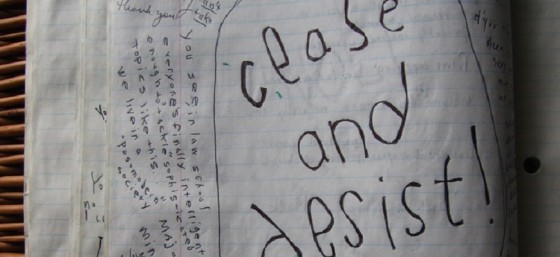A few weeks ago we all had a good laugh when Jeff Briton, owner of Exit 6 Pub and Brewery in Cottleville, Missouri got a cease and desist letter from Starbucks when he named one of his craft beers “Frappicino.” Starbucks said this was too similar to their Frappuccino and even took the liberty of contacting the beer review website Untappd to get the Frappicino beer listing removed.
Briton responded with a letter and a check for $6 – the profit he made from selling the beer to the three people who reviewed it on Untappd. If you haven’t read this letter yet, go do it. It’s hilarious.
My hat’s off to Briton for writing such a brilliant response and turning this situation into an awesome opportunity to promote Exit 6. Some people might say that Starbucks’ lawyers were being jerks for sending a cease and desist letter to the little guy who wasn’t their competition anyway. But it was what Starbucks had to do to protect its intellectual property.
When you have a copyright or a trademark and you know that someone is using your intellectual property without your permission and you do nothing, you send a message that you don’t care about protecting your intellectual property rights. If you let the little guys get away with things like Frappicino beer and then one of your big competitors does something similar and you try to lay the smack down on them, your competitor will have an argument that your track record shows that you let others use your property without permission or penalty. By not protecting your intellectual property, you put yourself at risk of losing your intellectual property rights.
It’s because of this risk that Starbucks has to send cease and desist letters to Exit 6 Pub. This is why I tell clients to keep an eye out for other people using their intellectual property. In trademark situations, a cease and desist letter is usually the proper response, even in situations like Frappicino beer.
This is also why I tell bloggers and photographers to be diligent about who is using their work. If they find that someone’s using their copyrights without permission, even if they’re ok with it, I often recommend they contact the alleged infringer and grant them a license after the fact and request an attribution if the infringer didn’t give them one. If they’re not ok with what the alleged infringer did, we discuss whether the artist wants to send a cease and desist, a DMCA takedown notice, a licensing agreement with a bill, or sue for infringement. There should always be a response.
If you have questions about your intellectual property rights or your strategy to protect them, please contact an intellectual property attorney in your community. If you have questions related to copyright or trademark and blogging, please check out my book The Legal Side of Blogging: How Not to get Sued, Fired, Arrested, or Killed.
If you want to chat with me more about this topic, you can connected with me on Twitter, Google+, Facebook, YouTube, LinkedIn, or you can email me. You can also subscribe to the Carter Law Firm newsletter.
Please visit my homepage for more information about Carter Law Firm.
